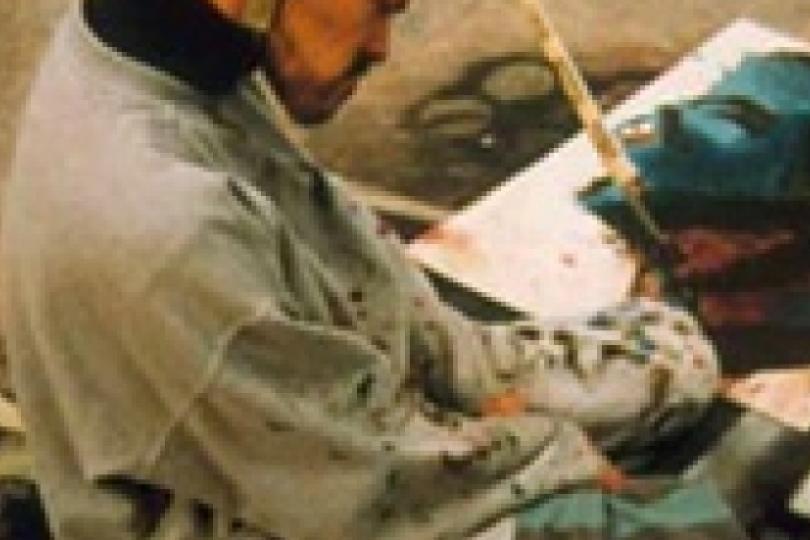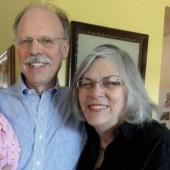When advocates make the arguments, the defenses, the cases for continuing to include all forms of art in the schools, they often discuss appreciation, cultural awareness, avenues to new learning and skills, and enjoyment. All of these potential outcomes are important and desirable. When applying these benefits to the education of children who have various disabilities, their importance is magnified. But artists, educators, parents and other concerned parties have been making these points for a long time, and progress does not seem substantial. Perhaps what is needed in this sound-byte age is a shortcut to communicating the crucial, core importance of this issue. Perhaps we should make this case: Art is essential because art is language.
Many individuals with disabilities face challenges in the area of communication; they may have difficulty producing speech; they may rely on alternative communication strategies that are not readily accessible to others; they may find typical communication too emotionally charged; they may have emotional or behavioral blocks to using speech at all. For these individuals, some sort of alternate, but fairly universal, language is necessary, and this is where the arts can play an important role.
As educators in the area of emotional/behavioral disability, we have seen many examples of the power of story telling, writing, theatre, music, and visual arts to assist students and adults to more completely understand and express their needs. We have observed with disbelief as emotionally inaccessible, street smart kids hold profound conversations about feelings and behavior with a puppet; have heard kids quote song lyrics as a way to describe their emotions; have seen not only feelings, but actual information come out of a person’s drawing or painting as they create with different art media.
Fusion of art and language
Although not a program specifically for students with disabilities, the moving and insightful literary pieces documented each year in the COMPAS (Community Programs in the Arts and Sciences – St. Paul) youth anthology clearly illustrate the fusion of art and language. This work is not just the result of learning about parts of speech and how to spell, but of learning the power of words and image, the reach and communication words attain in these creative forms. Listening to students discuss a performance they have all seen is a revelation when they understand that everyone did not perceive the story, the action, or the emotions in exactly the same way – and that no one is wrong in those perceptions. The common thread here is the language of art. The tools, the words, the feelings, the understandings generated by seeing, hearing, participating, and being a part of arts experiences – all of these provide individuals with a new way of expressing themselves – both inwardly and outwardly.
We recently worked with a teacher who was struggling with issues of bullying in her classroom. One child in particular, older and larger than the other students, whose home situation was difficult and violent, was making life miserable for some of her classmates. This was not a child who was able to talk about behavior or feelings, or who would express any desire to do so. When a clown puppet show was presented to the class, however, including a story about how the clown was terrorized by the circus lion when he first arrived and about the steps he took to change things, a new avenue of communication was opened. The child in question told her teacher that she would like to write notes to the students she had bullied (the lion did this in the play), but as she sat down to write, she suggested to the teacher that perhaps Bobo the clown should whisper some ideas in her ear as she wrote. No one planned that piece of the story …the girl herself thought of it, decided it would be helpful, was able to ask for it, and wrote the notes. A new way of communication – a new path for language. Priceless.
A new vocabulary
A language of understanding is also provided in the production of the Fidgety Fairy Tales, created by Matt Jensen and Marya Hart and produced with the Minnesota Association for Children’s Mental Health. These short musicals, based on well-known fairy tales – but with a twist - give young people the basic story (i.e. Cinderella, Goldilocks) but add language and situations that may relate to specific mental health challenges they face. The young actors participate in the play and have the excitement of the performance, but they also leave with a new vocabulary and a positively reinforcing way to discuss situations that are a big part of their lives. The audience enjoys the delightful and humorous production, but also leaves with this new ‘short hand’ way to talk about issues of mental health.
Of course, artists who have specific challenges themselves also discuss this notion that art is a form of language. Dan Keplinger, the star of the award winning documentary King Gimp, is a painter who has cerebral palsy and paints with a head stick. Keplinger is from Maryland, where he lives and works, and has been a painter since he was a child (he currently exhibits in a SOHO gallery). Although his speech is quite limited he has refused to use computer-generated speech because, he says, that voice isn’t his. He has language – oh, yes, he has language – he writes, “When I start a picture, I just think of what I have to say and not who is going to view it. I know people are not going to view my work as I do, but everyone can get the overall message.”
To tell and to understand
The overall message – that’s the important thing for all of us. For those who must work harder to hear the message, to understand the message, and to communicate the message, the arts may provide the language they have been searching for. For participants, for audiences, for teachers, for learners … finding a way to continue the message and to bring it to others and to themselves is a critical part of being human.
And it has always been that way…an old tale:
When misfortune threatened the tribe, the Leader would go to the forest, light the fire, say the prayer, and the misfortune would be avoided. As time went on, the task fell to a new Leader who knew both the forest and the prayer, but not how to light the fire. Nevertheless, the misfortune was avoided. A third Leader knew only the forest, as the prayer and the fire had been forgotten. But this, too, was sufficient. Finally, the task fell to a fourth Leader who knew neither the forest, nor the fire, nor the prayer. All he could do was tell the story. And it was enough.
It seems a simple proposition – to tell the story. But telling the story requires the language to tell and the language to understand. The arts are the best way we have to tell the same story many different ways – and to tell the many different stories in ways we can all comprehend. After all, everything begins with ‘Once upon a time….’.
Mary Kay and Bob Zabel
Mary Kay and Bob Zabel spent twenty-nine years as professors of special education at Kansas State University before returning to the Twin Cities to hone their skills as audience members and art groupies.





